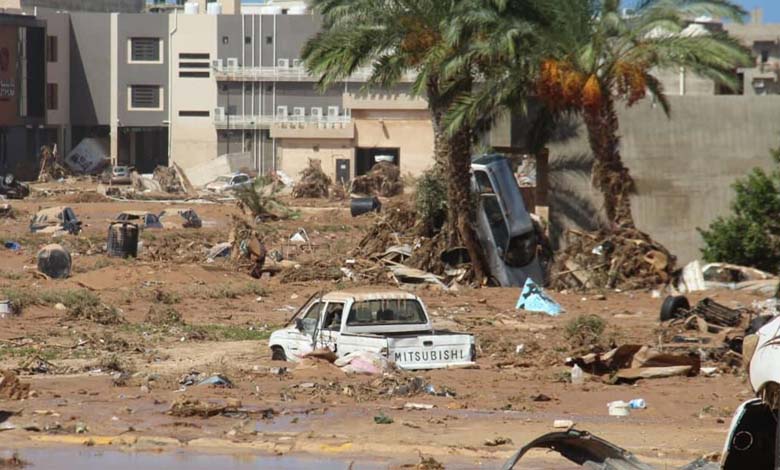After Hurricane “Daniel”… How Does Climate Change Threaten Libya?

A year after Hurricane Daniel claimed the lives of thousands in Libya, with thousands still missing, concerns about the impact of climate change on this North African country continue to grow. The political division deepening Libya’s crises further exacerbates these fears.
-
Due to climate change, “glacial lakes” threaten villages in Nepal
-
“Climate Change” Affects the Intensity of Rainfall and Hurricanes
For years, Libya has suffered from the effects of climate change, including reduced rainfall and the expansion of deserts, which already cover about 95% of its territory.
Significant Impacts
According to various statistics, Libya’s land area is approximately 1.759 million square kilometers, and desertification poses one of the biggest climate challenges for authorities, along with disasters like Hurricane Daniel, which caused widespread destruction.
-
Climate Change Forces Italy and Switzerland to Redraw Their Borders
-
Negative Impact of Climate Change on Poor Women and Housewives
Iman Al-Mazeg, a professor at the University of Benghazi, said: “Hurricane Daniel caused significant soil degradation, with severe erosion. Moreover, saltwater infiltrated coastal areas, leading to a loss of fertility in the topsoil, which affects agriculture.”
She added: “Livestock has also been impacted by climate change, as part of it relies on agriculture and another part on imported feed. Heat stress has reduced productivity, and the shrinking of grazing lands further affects livestock, in addition to the rise in diseases affecting animals.”
-
How does climate change affect mothers and children worldwide?
-
Climate Change Threatens Planet’s Largest Freshwater Reserves
Al-Mazeg further noted: “Climate change has also affected wildlife, such as migratory birds in Libya, due to temperature variations, causing them to relocate.”
She concluded by saying: “Food security has been compromised due to the decline in crop yields, livestock losses, and disruptions in fishing activities, whether due to Hurricane Daniel or coastal erosion. These factors have led to higher prices and financial losses for farmers. Even the prices of livestock sold during events like Eid al-Adha have risen significantly.”
-
Climate change endangers earth’s largest freshwater reserves
-
Climate Change Accelerates… Are There Solutions?
Unpreparedness
Following the massive losses in infrastructure and human lives caused by Hurricane Daniel last year, questions have arisen about the authorities’ preparedness to address environmental disasters in a country with increasing political and governmental divisions.
Mohamed Belkacem Mahjoub, a local affairs observer in Libya, stated: “In the eastern region, there was a significant loss of livestock, but the situation is beginning to stabilize. Eastern Libya is particularly known for livestock farming, and Hurricane Daniel mainly affected agricultural activity, especially the soil.”
-
How does climate change affect the acidity of the Southern Ocean?
-
Climate change weakens the ability of structures in Siberia to resist warming
He explained: “Many rare tree species, already endangered, were lost in the region. Efforts are underway to save them, but they are primarily individual or led by NGOs. There is now increased focus on environmental issues, which must be addressed as a critical priority rather than a secondary concern, as Libya faces significant infrastructure problems. Efforts must be intensified.”
He also noted: “Southern Libya is heavily affected by climate change, particularly by sudden national storms that occur before winter. Libya also experiences Mediterranean storms, which are unpredictable, although they rarely cause significant human losses.”
-
Climate change predictions… How algae help improve accuracy?
-
Climate change hits Tunisian forests, afforestation key solution
Finally, Mahjoub concluded: “Currently, there are no signs of improvement in institutional response capabilities to climate-induced disasters. Libya continues to face prolonged heatwaves, drought seasons, and severe national storms. The country remains unprepared.”












